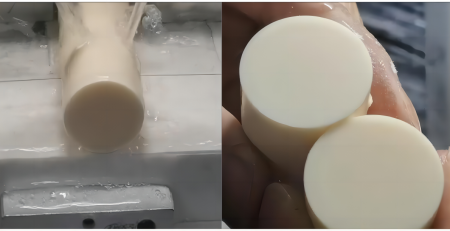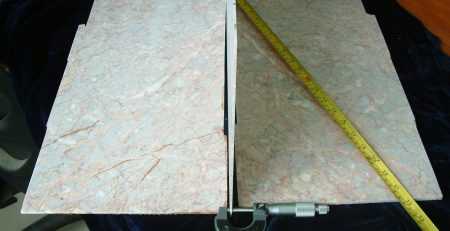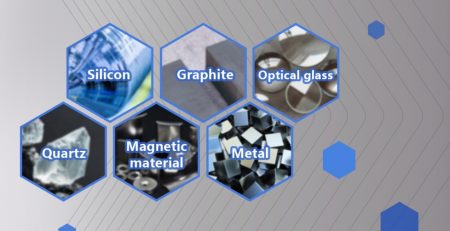アルミナセラミックスの包括的なガイド
アルミナセラミックス, 酸化アルミニウムセラミックスとも呼ばれます, は、さまざまな業界で広く使用されているセラミック材料の用途の広いクラスです. この包括的なガイドでは, アルミナセラミックスの世界に踏み込みます, それらの構成を探る, プロパティ, アプリケーション, と切断方法. Let’s get started!
 アルミナセラミックスとは?
アルミナセラミックスとは?
アルミナセラミックスは、主に酸化アルミニウムで構成されたセラミック材料の一種です (Al2O3). 彼らはその並外れた硬度で知られています, 高融点, そして優秀な電気絶縁性. Alumina ceramics can be classified into different grades based on their purity and specific properties.
Characteristics of Alumina Ceramics:
- High Hardness: Alumina ceramics exhibit excellent hardness, surpassing that of most other ceramic materials. This property makes them highly resistant to wear, abrasion, and scratching.
- High Temperature Resistance: Alumina ceramics have a high melting point, allowing them to withstand extreme temperatures without losing their structural integrity.
- Electrical Insulation: Alumina ceramics possess excellent electrical insulation properties, making them suitable for applications in electrical components and insulators.
- Chemical Resistance: Alumina ceramics are highly resistant to chemical corrosion, making them ideal for use in harsh chemical environments.
- Biocompatibility: Certain grades of alumina ceramics are biocompatible, meaning they can be used in medical and dental applications without causing adverse reactions in the human body.
Applications of Alumina Ceramics:
Alumina ceramics find extensive use in various industries and applications, including:
- Electronics: Alumina ceramics are employed in the manufacturing of electronic components such as insulators, substrates, circuit boards, and semiconductor parts.
- Mechanical and Structural Components: Their high hardness and wear resistance make alumina ceramics suitable for applications such as bearings, seals, pistons, cutting tools, and wear-resistant parts.
- Medical and Dental: Alumina ceramics are used in the production of dental implants, prosthetics, surgical instruments, and joint replacements due to their biocompatibility and durability.
- Chemical and Process Industries: Alumina ceramics are utilized in chemical reactors, valves, nozzles, and other components that require resistance to corrosion and high temperatures.
- Aerospace and Automotive: Alumina ceramics find applications in aerospace components, engine parts, spark plugs, and sensors due to their high-temperature resistance and electrical insulation properties.
Cutting Methods for Alumina Ceramics:
- Alumina ceramics are extremely hard and brittle, making their cutting and shaping process challenging. Common cutting methods for alumina ceramics include:
- Diamond Tool Cutting: Diamond tools, such as diamond blades or grinding wheels, are commonly used for cutting and shaping alumina ceramics. These tools are embedded with industrial-grade diamond particles, known for their exceptional hardness and abrasion resistance. The diamond particles on the blades or wheels create a cutting edge that can effectively penetrate the hard surface of alumina ceramics.
しかし, when it comes to more intricate and precise cutting requirements, ダイヤモンドワイヤーループ cutting is often preferred. Diamond wire loop cutting is a technique that utilizes a thin wire embedded with diamond particles, known as diamond wire loop, to cut through alumina ceramics. The diamond wire loop is guided by a set of pulleys and driven by a motor, creating a continuous cutting loop.
 Laser Cutting: High-powered lasers are employed to cut and engrave alumina ceramics with precision. Laser cutting provides a non-contact and heat-controlled method for shaping ceramics.
Laser Cutting: High-powered lasers are employed to cut and engrave alumina ceramics with precision. Laser cutting provides a non-contact and heat-controlled method for shaping ceramics.
- Waterjet Cutting: High-pressure waterjet with abrasive particles can be used to cut alumina ceramics. This method offers precise cutting without causing excessive heat or damage to the material.
おわりに:
Alumina ceramics are a remarkable class of ceramic materials with exceptional properties and a wide range of applications. Their unique combination of hardness, high-temperature resistance, electrical insulation, and chemical resistance make them indispensable in various industries. Understanding their composition, プロパティ, アプリケーション, and cutting methods is crucial for utilizing alumina ceramics effectively in different fields of engineering and technology.











